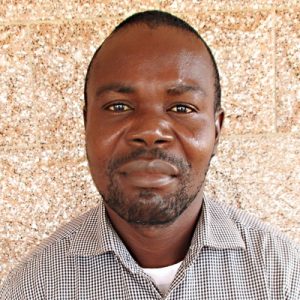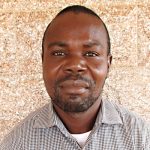Masome Village is a peaceful and quiet community. The thick bushes and forests that cover this village lend not only a gorgeous and lush landscape but also tunes of birdsong and other animals' melodious voices from their far distances in the bush. There are no loud urban sounds to disrupt the peace here.
People in Masome have preserved some of their forest due to the belief that one of their protectors and gods lives among the forest and thick bushes. As a very vegetated community, some trees are specified for certain purposes. For example, select big cotton trees that are close to the riverside are adorned with red and white clothes for their god's existence by the name of Pa Komrabai. They believe Pa Komrabai protects the village and helps them to have higher yields in farming. Any specific vegetation for their protector should not be used for any other purposes.
Most buildings in this community are made of mud blocks with zinc roofs, though there are a few thatch roof houses as well. The majority of homes are not plastered with cement. The most common livelihood in this community is selling their own farm produce in nearby markets. Some people also fish to earn a living.
Despite the surrounding greenery, the 317 people of Masone Village face daily challenges accessing enough clean, safe, and reliable water for their needs. What is meant to be the main well in the village is not working correctly and has not for more than a decade. Furthermore, in such poor shape, our teams were not aware that they were at the water point until someone told them! It is that hidden and inaccessible.
"The entrance to the current water source was very bushy to the point that any attack or accident would take time to be discovered," said one of our team members after visiting the well, referring to the dangers both humans and wild animals can pose.
Because there is no reliable water source here, people turn to open water points that cause waterborne diseases. Cases of dysentery, diarrhea, and cholera are frequently reported among families as a result.
"The only protected water well in my village was constructed here in 1986. This well has been broken for over ten years now. Since then, my community has been using the alternate water source, which is the stream. The stream water source is hazardous for school-going kids," explained Pa Umaro Conteh, the village Headman.
What We Can Do:
Well Rehabilitation
The well marked for this overhaul is dry for a few months every year and needs major work to supply adequate, clean water to the community year-round. The pump will be removed, and a hand auger will be lowered inside and powered by a drill team. This hand auger will allow the team to drill several meters deeper to hit a sufficient water column to ensure the well supplies water throughout all seasons.
As the team drills, the casing will be installed, transforming the bottom of this hand-dug well into a borehole. PVC piping will connect this lower system directly to the pump, a construction that we know will also improve the quality of water.
Once this plan is implemented, everyone within the community will have access to safe drinking water in quality and quantity, even through the dry months.
Hygiene and Sanitation Training
There will be hygiene and sanitation training sessions offered for three days in a row.
After our visit, the hygiene and sanitation trainer decided it would be best to teach community members how to build a tippy tap (a hand-washing station built with a jerrycan, string, and sticks). They will use these tippy taps for handwashing demonstrations and will also teach about other tools like dish racks and the importance of properly penning in animals.
This training will also strengthen the water user committee that manages and maintains this well. They enforce proper behavior and report to us whenever they need our help solving a serious problem, like a pump breakdown.

 Borehole Well and Hand Pump
Borehole Well and Hand Pump

































